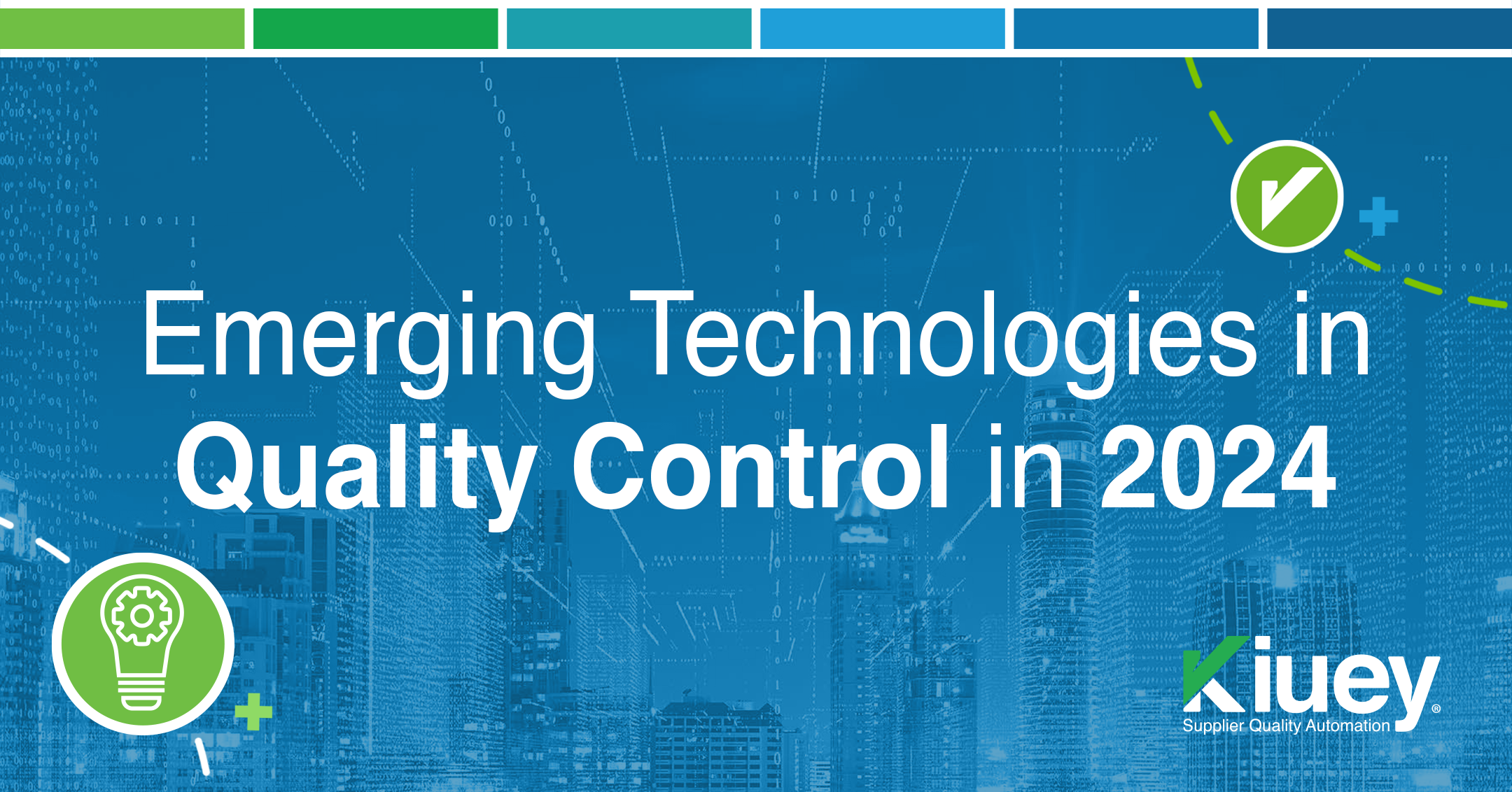
Quality control (QC) is undergoing a revolution driven by advancements in technology. As we move through 2024, a wave of innovative solutions is transforming the way companies ensure the quality of their products. This article explores some of the most prominent emerging technologies that are shaping the future of QC.
The Traditional Approach: Labor-intensive and Limited
Historically, QC relied heavily on manual inspections and statistical methods. While effective for some applications, this approach is often labor-intensive, prone to human error, and limited in its ability to catch subtle defects.
The Three Pillars of Quality Management:
Traditionally, quality management has focused on three key pillars:
- Inspection and Testing: This involves physically inspecting products or conducting tests to verify their conformance with specifications.
- Data Collection and Analysis: Data collected during inspections and testing is analyzed to identify trends and potential quality issues.
- Corrective Action: Once an issue is identified, corrective actions are implemented to address the root cause and prevent future occurrences.
While these core principles remain relevant, emerging technologies are significantly enhancing each stage of the process.
Emerging Technologies Transforming Quality Control:
Here’s a glimpse into some of the key technologies redefining quality control in 2024:
- Artificial Intelligence (AI) and Machine Learning (ML): AI and ML algorithms are being used to analyze vast amounts of inspection data, identify patterns and anomalies that might escape human inspectors. This allows for predictive maintenance, anticipating potential issues before they occur.
- Computer Vision (CV): CV systems use advanced image processing techniques to automate visual inspections. High-resolution cameras coupled with machine learning algorithms can analyze product images with incredible precision, detecting even the most minor defects.
- Internet of Things (IoT) and Sensor Integration: Integrating sensors into production lines and products enables real-time monitoring of critical parameters like temperature, pressure, and vibration. This data can be used to identify deviations from optimal production conditions and prevent quality issues.
- Robotics and Cobots: Robots and collaborative robots (cobots) are increasingly being used in QC tasks. Robots can perform repetitive and potentially hazardous tasks with high consistency, while cobots can work alongside human inspectors, augmenting their capabilities.
- Blockchain: Blockchain technology offers a secure and transparent way to track the provenance of materials and products throughout the supply chain. This can be invaluable for ensuring the authenticity and traceability of components and finished goods.
- Big Data and Data Analytics: By harnessing the power of Big Data and advanced analytics, companies can gain deeper insights into their quality processes. This allows for the identification of hidden trends, root-cause analysis of quality issues, and the development of more effective preventive measures.
Benefits of Embracing Emerging Technologies:
The integration of these emerging technologies into QC processes offers several compelling advantages:
- Enhanced Efficiency: Automation and advanced data analysis significantly improve the efficiency of QC tasks, freeing up human inspectors for more strategic activities.
- Improved Accuracy: Technology can identify subtle defects that might be missed by human inspectors, leading to higher quality standards.
- Predictive Maintenance: Real-time monitoring and data analysis allow for proactive identification of potential issues, preventing production downtime and reducing waste.
- Data-driven Decision Making: By leveraging data analytics, companies can gain deeper insights into their quality processes, enabling them to make data-driven decisions for continuous improvement.
- Supply Chain Transparency: Technologies like blockchain can enhance transparency within the supply chain, ensuring the authenticity and quality of materials and components.
Challenges and Considerations:
While the future of QC is undoubtedly bright, some challenges remain. Integrating new technologies requires investment in infrastructure, training, and change management. Additionally, data security and ethical considerations surrounding AI use need to be addressed.
Conclusion:
As we navigate through 2024, the landscape of quality control is rapidly evolving. By embracing emerging technologies and fostering a culture of continuous improvement, companies can ensure they are well-positioned for success in the digital age. These advancements promise to deliver not only higher quality products but also increased efficiency, reduced costs, and a more sustainable and resilient supply chain.
The future of QC is one where technology empowers humans, enabling them to focus on innovation and strategic problem-solving while technology handles the heavy lifting of routine inspections and data analysis.
Subscribe to our newsletter.
Your go-to destination for insights, best practices, and innovative solutions in supplier quality assurance.Recent Posts
AI + Calibration: Towards a standard digital calibration certificate
October 21, 2024
Project Management Basics for Supplier Quality Engineers
October 19, 2024
IMDS: A strategic tool for supplier quality engineers
October 16, 2024
ABC on ISO/IEC 17025 Calibration Certificates
October 14, 2024
Tags
Let's talk to see how PPAP Manager can help your company to save time and money.






